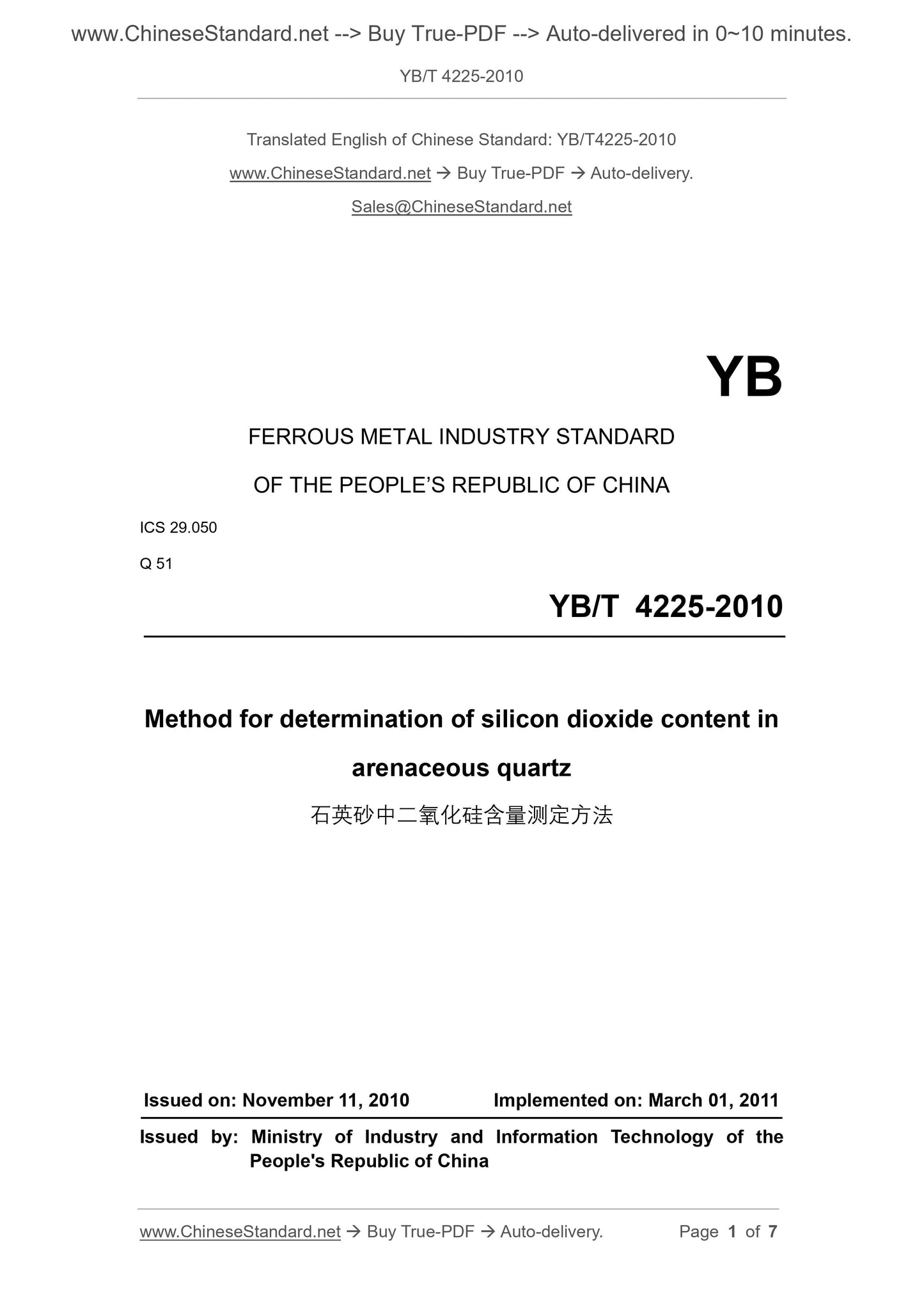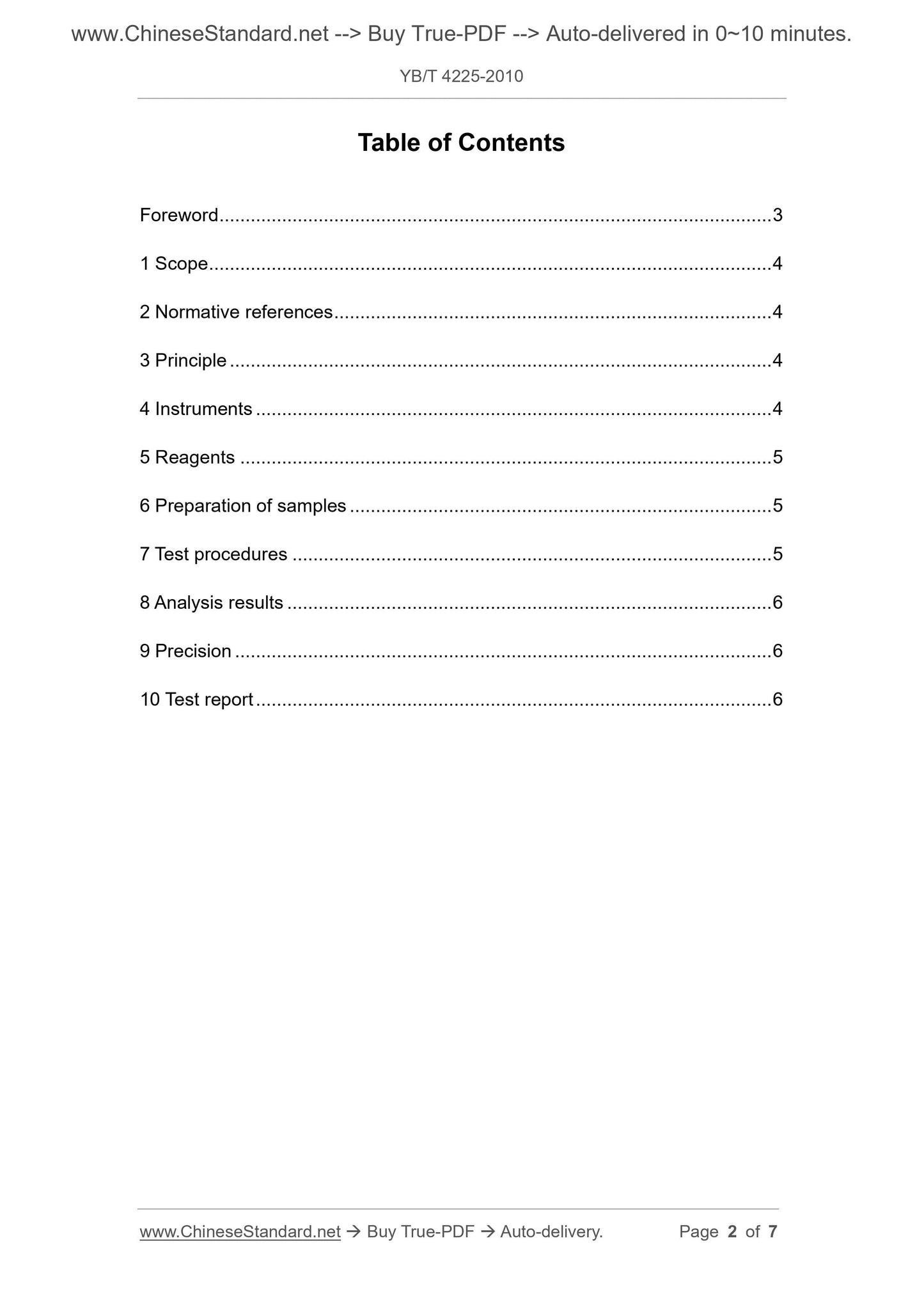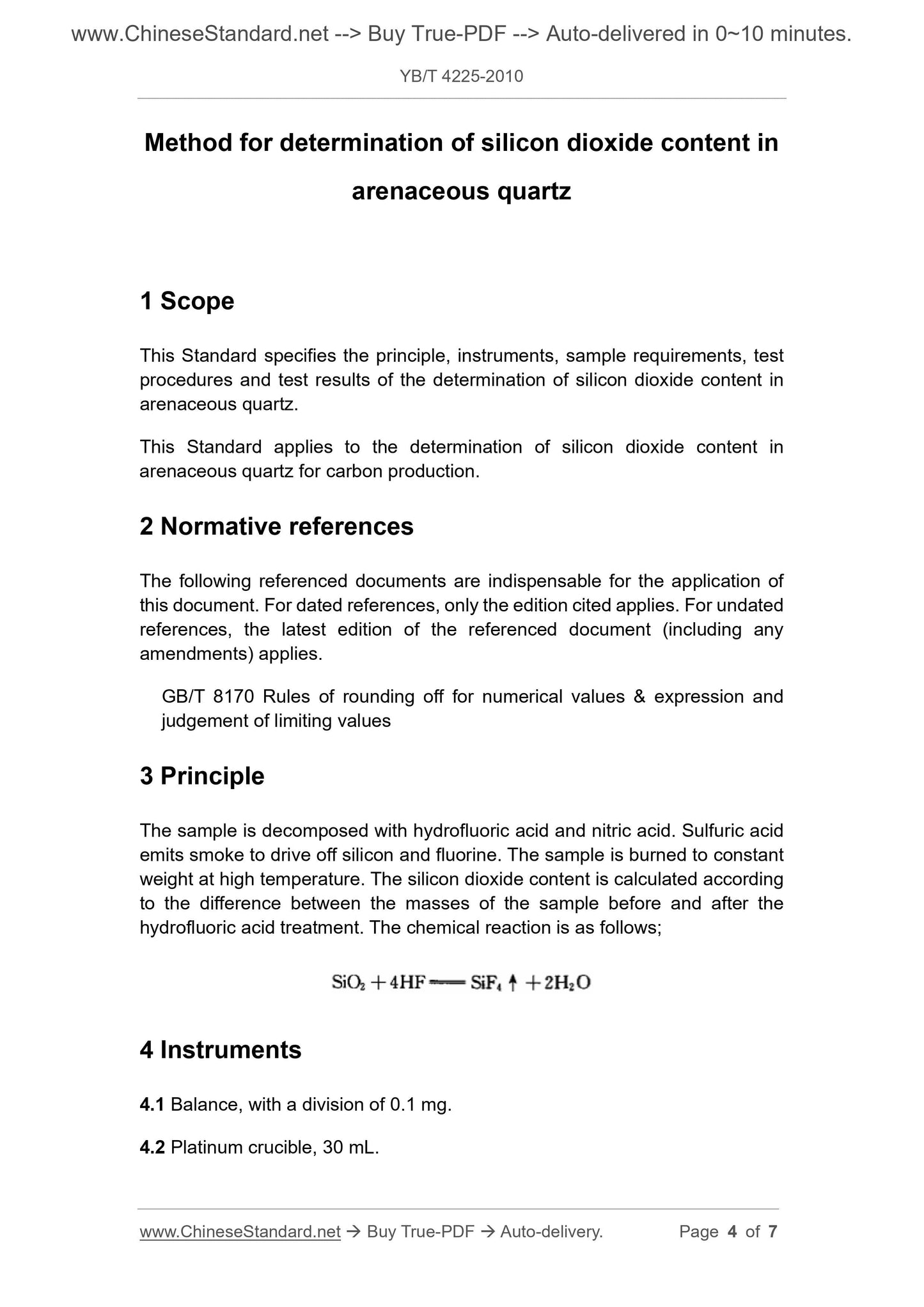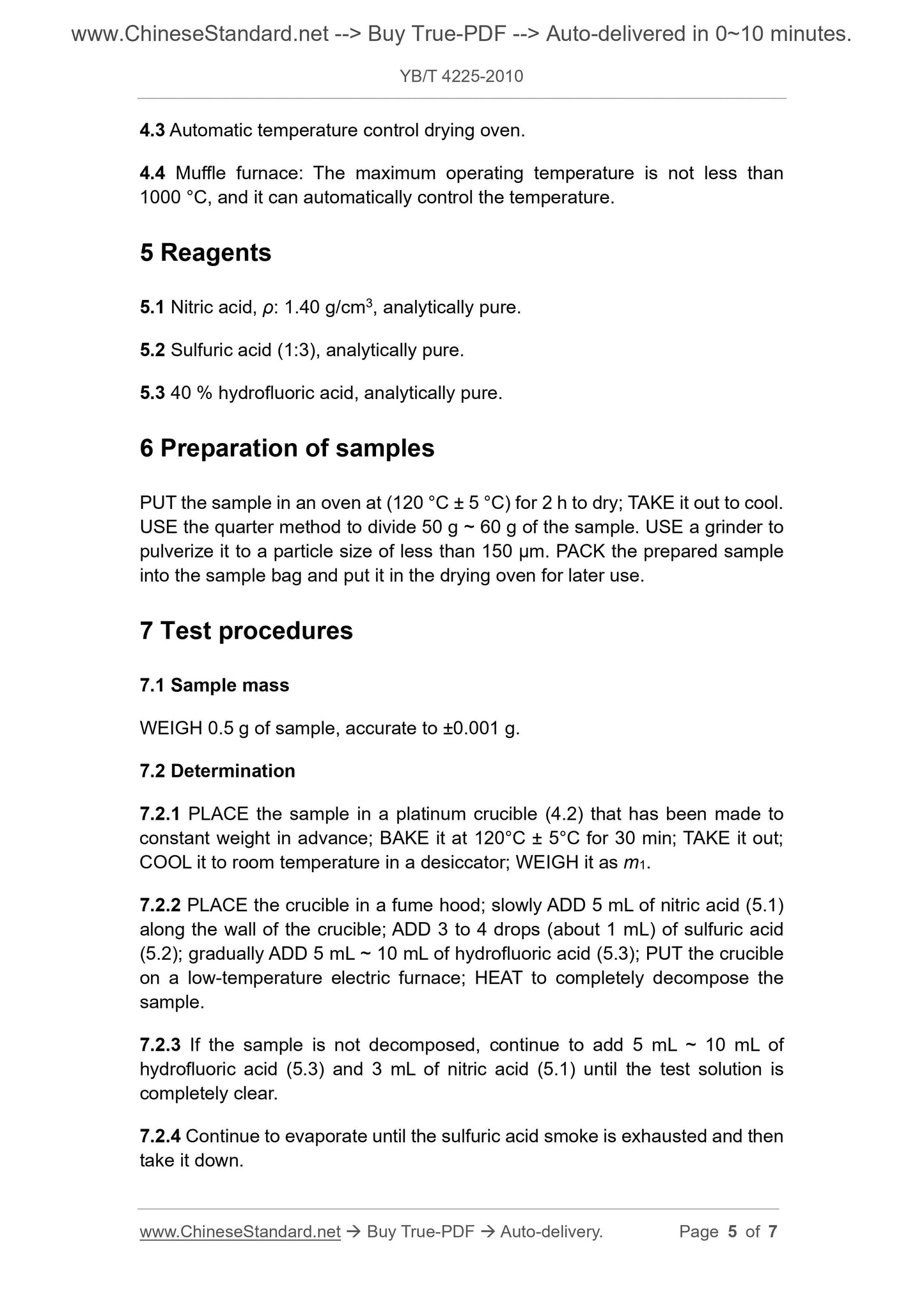1
/
of
4
www.ChineseStandard.us -- Field Test Asia Pte. Ltd.
YB/T 4225-2010 English PDF (YB/T4225-2010)
YB/T 4225-2010 English PDF (YB/T4225-2010)
Regular price
$140.00
Regular price
Sale price
$140.00
Unit price
/
per
Shipping calculated at checkout.
Couldn't load pickup availability
YB/T 4225-2010: Method for determination of silicon dioxide content in arenaceous quartz
Delivery: 9 seconds. Download (and Email) true-PDF + Invoice.Get Quotation: Click YB/T 4225-2010 (Self-service in 1-minute)
Newer / historical versions: YB/T 4225-2010
Preview True-PDF
Scope
This Standard specifies the principle, instruments, sample requirements, testprocedures and test results of the determination of silicon dioxide content in
arenaceous quartz.
This Standard applies to the determination of silicon dioxide content in
arenaceous quartz for carbon production.
Basic Data
| Standard ID | YB/T 4225-2010 (YB/T4225-2010) |
| Description (Translated English) | Method for determination of silicon dioxide content in arenaceous quartz |
| Sector / Industry | Ferrous Metallurgy Industry Standard (Recommended) |
| Classification of Chinese Standard | Q51 |
| Classification of International Standard | 29.050 |
| Word Count Estimation | 6,671 |
| Date of Issue | 2010-11-10 |
| Date of Implementation | 2011-03-01 |
| Quoted Standard | GB/T 8170 |
| Regulation (derived from) | MIIT (2010) No. 126 |
| Issuing agency(ies) | Ministry of Industry and Information Technology |
| Summary | This standard specifies the quartz sand silica content measurement principle, equipment, sample requirements, test procedures, test results. This standard applies to the production of quartz sand in carbon dioxide content. |
Share







